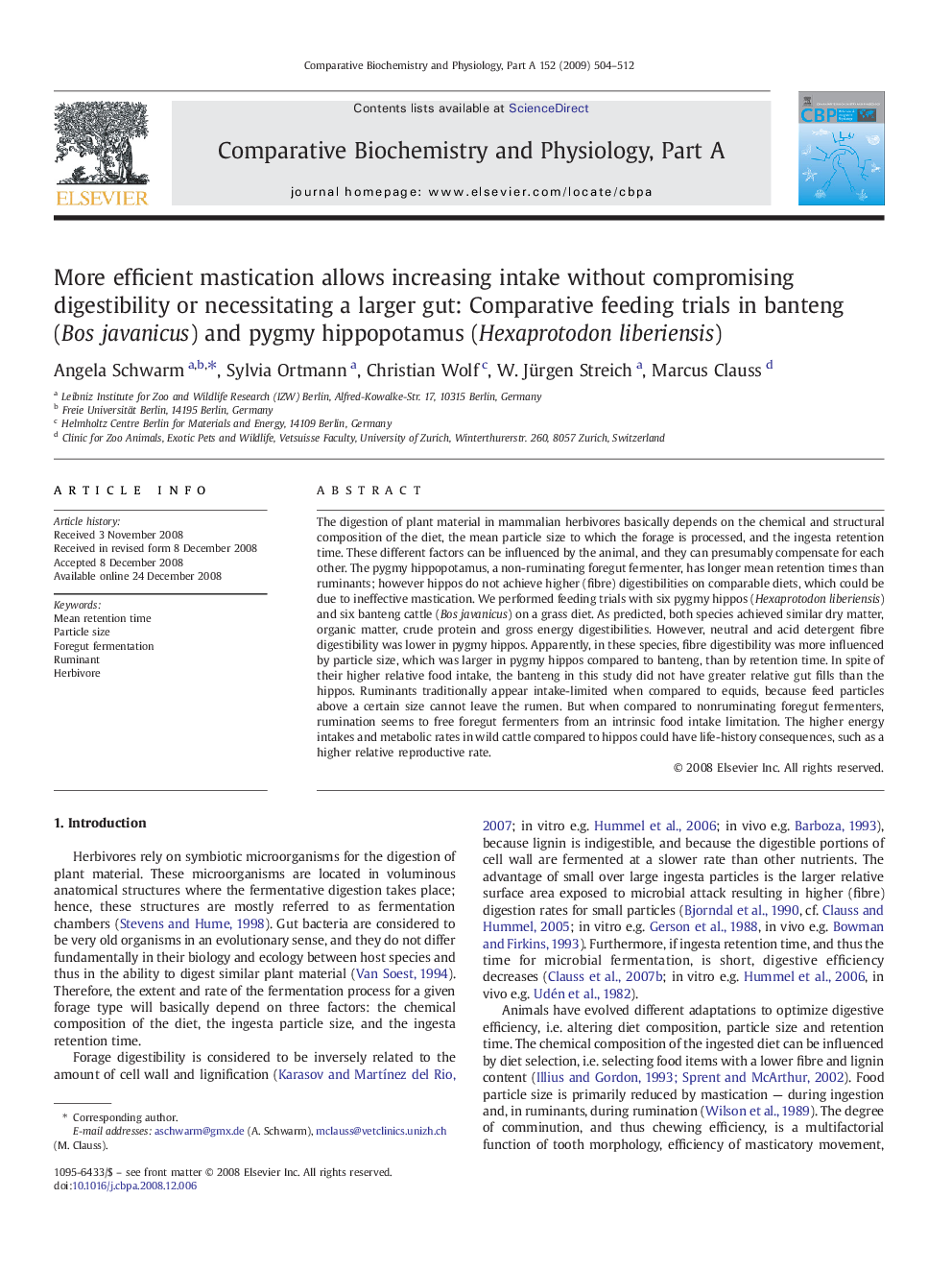| Article ID | Journal | Published Year | Pages | File Type |
|---|---|---|---|---|
| 1974633 | Comparative Biochemistry and Physiology Part A: Molecular & Integrative Physiology | 2009 | 9 Pages |
The digestion of plant material in mammalian herbivores basically depends on the chemical and structural composition of the diet, the mean particle size to which the forage is processed, and the ingesta retention time. These different factors can be influenced by the animal, and they can presumably compensate for each other. The pygmy hippopotamus, a non-ruminating foregut fermenter, has longer mean retention times than ruminants; however hippos do not achieve higher (fibre) digestibilities on comparable diets, which could be due to ineffective mastication. We performed feeding trials with six pygmy hippos (Hexaprotodon liberiensis) and six banteng cattle (Bos javanicus) on a grass diet. As predicted, both species achieved similar dry matter, organic matter, crude protein and gross energy digestibilities. However, neutral and acid detergent fibre digestibility was lower in pygmy hippos. Apparently, in these species, fibre digestibility was more influenced by particle size, which was larger in pygmy hippos compared to banteng, than by retention time. In spite of their higher relative food intake, the banteng in this study did not have greater relative gut fills than the hippos. Ruminants traditionally appear intake-limited when compared to equids, because feed particles above a certain size cannot leave the rumen. But when compared to nonruminating foregut fermenters, rumination seems to free foregut fermenters from an intrinsic food intake limitation. The higher energy intakes and metabolic rates in wild cattle compared to hippos could have life-history consequences, such as a higher relative reproductive rate.
